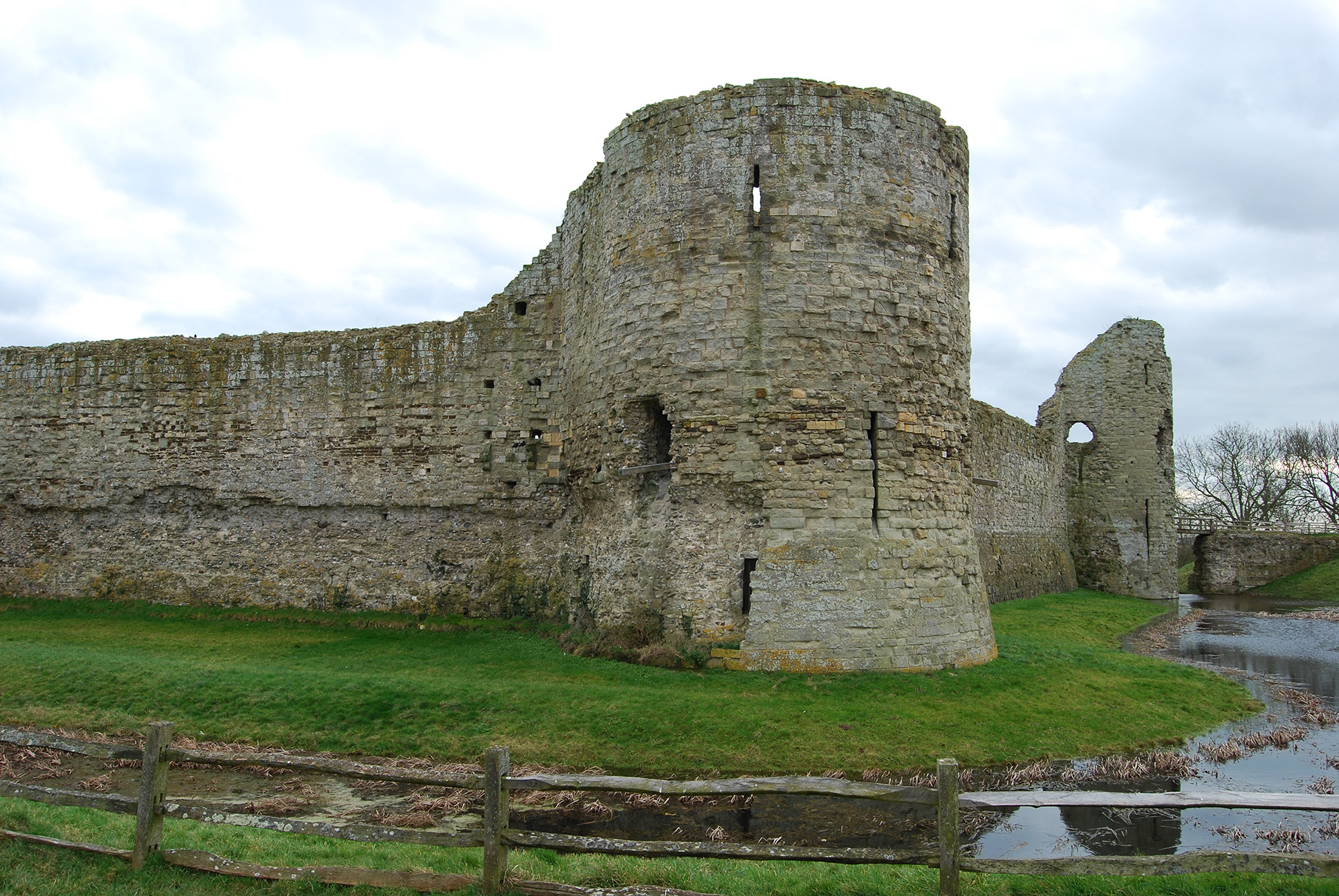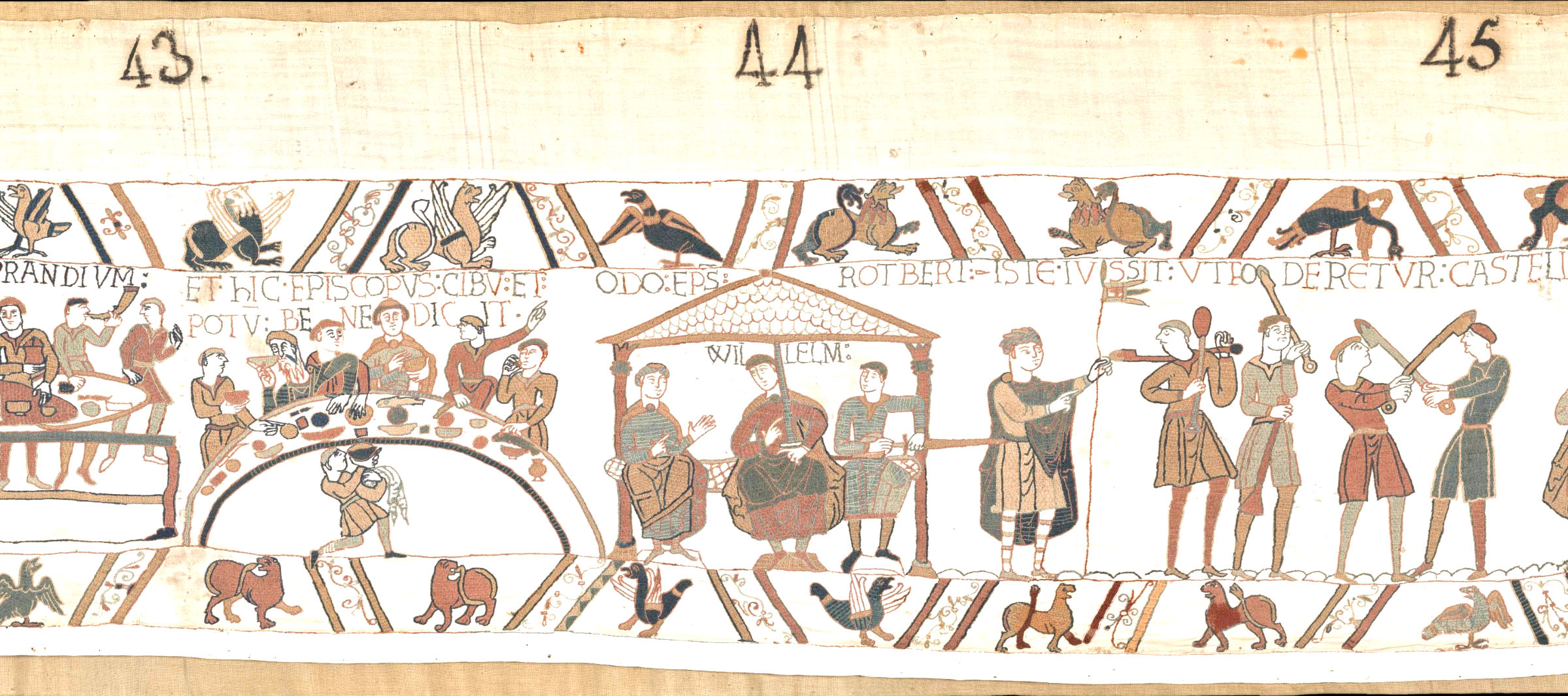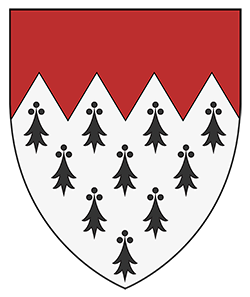Robert de Mortain - Count of Mortain
Earl of Cornwall
Robert de Mortain was a Norman Nobleman and half-brother of William the Conqueror. He was one of the few companions of William to fight at the Battle of Hastings in 1066 and was one of the most significant landholders in England following the Conquest.

Robert was born around 1031 in Normandy, France; he was the son of Herluin de Conteville, Viscount of Conteville, and Herleva of Falaise. Robert was also the brother of Odo of Bayeux. Robert's mother, Herleva, was the mistress of Robert I, Duke of Normandy, and the mother of William the Conqueror, making William Robert's half-brother.
Around 1035, Herluin, his wife Herleva, and young Robert founded Grestain Abbey in Normandy, France.
Around 1049, Robert was made Count of Mortain by Duke William of Normandy, replacing William Werlenc, who the Duke had banished. Robert was entrusted to secure Normandy's southern border with Brittany and Bellême.
Sometime before 1066, Robert married Matilda de Montgomery, daughter of Roger de Montgomery, 1st Earl of Shrewsbury. Robert and Matilda had four children: William, Agnes, Denise, Emma.
In early 1066, Robert, Count of Mortain, was present at the first Council of Lillebonne as part of William's inner circle and again at the larger second council to discuss the Duke's planned invasion of England. Robert agreed to provide 120 ships for the invasion, which was more than any other Norman magnate. He was also one of the few of William's companions known to have been at the Battle of Hastings. In the Bayeux Tapestry, he is seen in panel 44, pictured at a dinner sitting with his brothers, William and Odo, on the day of landing at Pevensey Bay in England in 1066.

After the Battle of Hastings, William regarded Robert's contribution to its success as highly significant. He awarded Robert with enormous shares of land, totaling 797 manors in over twenty counties, with the majority being in Cornwall, where he virtually held all that earldom as he was considered the Earl of Cornwall. He administered his domain in the southwest from Launceston in Cornwall and Montacute in Somerset. His most crucial landholding was the rape of Pevensey (East Sussex), which protected the southern coast of England. He was also awarded Berkhamstead. Wooden motte and bailey castles were quickly built at Pevensey and Berkhamstead. The wooden castle at Pevensey was built within the stone ruins of the Roman fortification of Anderitum.
In 1069, Robert, Count of Mortain, along with Robert of Eu, commanded an army against a Danish force in Lindsey, Lincolnshire, when the Danes attempted to invade England following Edgar the Athling's rebellion. They routed the Danes. After that, Robert spent most of his time in Normandy, France.
In around 1082, Robert and his wife founded the collegiate church at St. Evroult at Mortain.
He participated in a revolt against his nephew, William Rufus, King William II, in 1088, alongside his brother Odo. William Rufus had restored the Earldom of Kent to Odo. Still, soon after, Odo began plotting to make Robert Curthose, William's older brother, King of England. Rufus attacked Odo at Tonbridge Castle, and when the castle fell, Odo fled to Robert at Pevensey Castle. Pevensey Castle fell after a six-week siege. Robert was pardoned by William Rufus, who also reinstated his titles and lands.
Robert, Count of Mortain, died in 1095 and was buried next to his wife Matilda and near his father at Grestain Abbey in Normandy.
